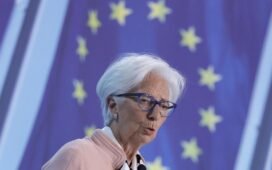- The Indian Rupee extends its decline in Thursday’s early European session.
- Rising bets of RBI rate cuts and risk aversion continue to undermine the INR.
- The RBI interest rate decision and the US January employment report will be in the spotlight on Friday.
The Indian Rupee (INR) extends its downside on Thursday. The local currency remains under selling pressure amid the expectation that the Reserve Bank of India (RBI) might cut the interest rates on Friday. Additionally, global trade war concerns fuelled risk aversion among investors, weighing on the INR.
Nonetheless, the foreign exchange intervention by the RBI and a decline in crude oil prices might help limit the Indian Rupee’s losses. Later on Thursday, the US weekly Initial Jobless Claims, Unit Labor Costs and Nonfarm Productivity will be released. The attention will shift to the RBI interest rate decision and the US January employment data on Friday.
Indian Rupee falls as India’s new RBI Governor is set to begin rate cuts
- The RBI is likely conducting buy/sell USD-INR swaps, pushing forward premiums lower, according to traders.
- USD/INR 1-year forward implied yield retreats from the day’s high, last at 2.19%.
- Most of the economists surveyed by Bloomberg anticipate the Indian central bank to lower the benchmark repurchase rate by at least 25 basis points (bps) to 6.25% on Friday.
- HSBC India Composite PMI came in at 57.7 in January. This figure came in weaker than the previous reading and the estimation of 57.9.
- HSBC India Services PMI eased to a two-year low of 56.5 in January versus 56.8 prior, lower than expected.
- “India’s services sector lost growth momentum in January, although the PMI remained well above the 50-break-even level. The business activity and new business PMI indices eased to their lowest levels since November 2022 and November 2023, respectively,” said Pranjul Bhandari, Chief India Economist at HSBC.
- The US Services PMI eased to 52.8 in January from 54.0 (revised from 54.1) in December, according to the Institute for Supply Management (ISM) on Wednesday. This reading came in below the market consensus of 54.3.
- Fed Vice Chair Philip Jefferson said on Thursday that he is happy to keep the Fed Funds on hold at the current level, adding that he will wait to see the net effect of Trump policies.
USD/INR maintains its positive trend
The Indian Rupee trades in negative territory on the day. The bullish view of the USD/INR pair prevails, characterized by the price holding above the key 100-day Exponential Moving Average (EMA). However, further consolidation cannot be ruled out before positioning for any near-term USD/INR appreciation as the 14-day Relative Strength Index (RSI) moves beyond the 70.00 mark.
The first upside barrier for USD/INR emerges at 87.49, an all-time high. Bullish candlesticks and buying pressure above this level might attract the pair to the 88.00 psychological level.
On the other hand, the 87.05-87.00 area acts as an initial support level for the pair, representing the low of February 5 and the round mark. More bearish candles or consistent trading below the mentioned level, the bears could take control and drag USD/INR down to 86.51, the low of February 3.
RBI FAQs
The role of the Reserve Bank of India (RBI), in its own words, is “..to maintain price stability while keeping in mind the objective of growth.” This involves maintaining the inflation rate at a stable 4% level primarily using the tool of interest rates. The RBI also maintains the exchange rate at a level that will not cause excess volatility and problems for exporters and importers, since India’s economy is heavily reliant on foreign trade, especially Oil.
The RBI formally meets at six bi-monthly meetings a year to discuss its monetary policy and, if necessary, adjust interest rates. When inflation is too high (above its 4% target), the RBI will normally raise interest rates to deter borrowing and spending, which can support the Rupee (INR). If inflation falls too far below target, the RBI might cut rates to encourage more lending, which can be negative for INR.
Due to the importance of trade to the economy, the Reserve Bank of India (RBI) actively intervenes in FX markets to maintain the exchange rate within a limited range. It does this to ensure Indian importers and exporters are not exposed to unnecessary currency risk during periods of FX volatility. The RBI buys and sells Rupees in the spot market at key levels, and uses derivatives to hedge its positions.





